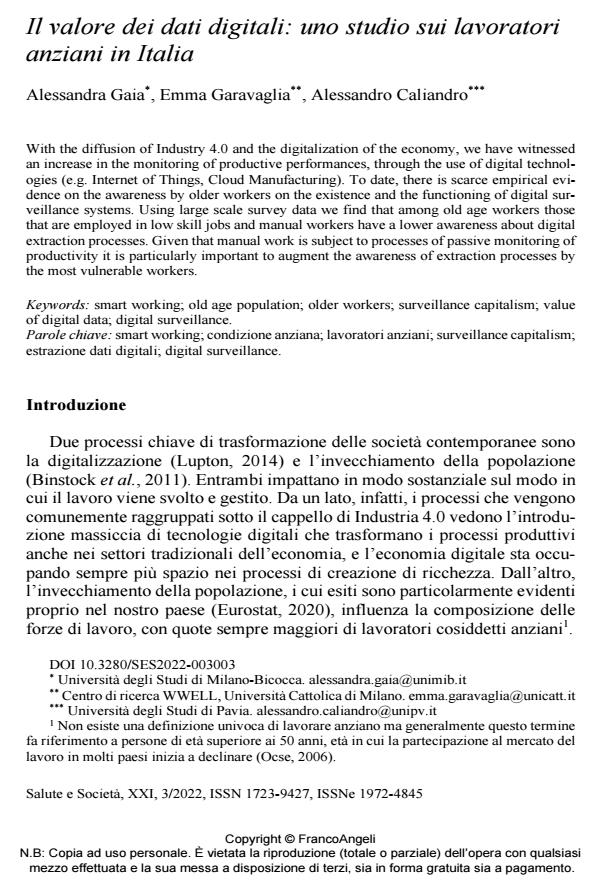Il valore dei dati digitali: uno studio sui lavoratori anziani in Italia
Journal title SALUTE E SOCIETÀ
Author/s Alessandra Gaia, Emma Garavaglia, Alessandro Caliandro
Publishing Year 2022 Issue 2022/3
Language Italian Pages 19 P. 26-44 File size 464 KB
DOI 10.3280/SES2022-003003
DOI is like a bar code for intellectual property: to have more infomation
click here
Below, you can see the article first page
If you want to buy this article in PDF format, you can do it, following the instructions to buy download credits

FrancoAngeli is member of Publishers International Linking Association, Inc (PILA), a not-for-profit association which run the CrossRef service enabling links to and from online scholarly content.
With the diffusion of Industry 4.0 and the digitalization of the economy, we have witnessed an increase in the monitoring of productive performances, through the use of digital technologies (e.g. Internet of Things, Cloud Manufacturing). To date, there is scarce empirical evidence on the awareness by older workers on the existence and the functioning of digital surveillance systems. Using large scale survey data we find that among old age workers those that are em-ployed in low skill jobs and manual workers have a lower awareness about digital extraction processes. Given that manual work is subject to processes of passive monitoring of productiv-ity it is particularly important to augment the awareness of extraction processes by the most vulnerable workers.
Keywords: smart working; old age population; older workers; surveillance capitalism; value of digital data; digital surveillance.
Alessandra Gaia, Emma Garavaglia, Alessandro Caliandro, Il valore dei dati digitali: uno studio sui lavoratori anziani in Italia in "SALUTE E SOCIETÀ" 3/2022, pp 26-44, DOI: 10.3280/SES2022-003003